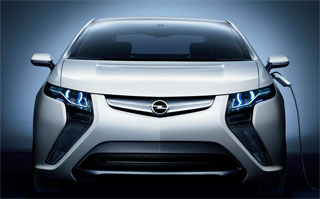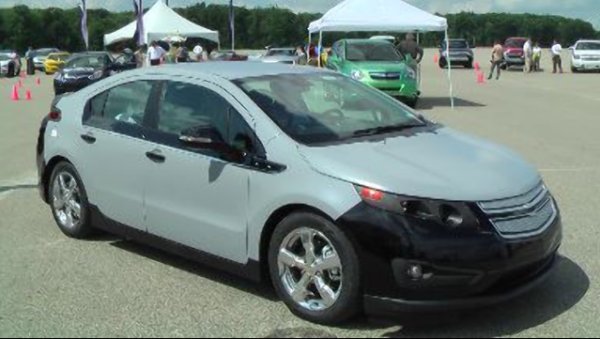Peugeot is still on track to launch the world's first diesel-hybrid vehicle late this year. Its 3008 HYbrid4 Concept is a thinly disguised version of a crossover fitted with a mild-hybrid system that will go into production late this year as a 2011 model.
Now other manufacturers are joining the party. Mercedes-Benz plans to launch its first hybrid-electric car with a diesel engine in 2011, and even GM has engineering prototypes on test tracks to help it figure out the best combination of electric-drive components with the fuel-saving engines.
The new technology will be launched in Europe, where diesels are common; whether it will come to the U.S. is unclear.

2011 Mercedes E250 Bluetec

Peugeot 3008 HYbrid4 Concept

Peugeot 3008 HYbrid4 Concept
Mercedes E300 Hybrid for 2012
Now Daimler chairman Dieter Zesche has confirmed the launch of the 2012 Mercedes-Benz E300 Hybrid, using a 2.2-liter diesel four with twin turbochargers, in late 2011. That's the same engine used in the E250 Bluetec shown at last year's New York Auto Show, which may go on sale for 2011 in the U.S. as the company's first diesel four in years.
The lithium-ion battery pack and electric motor in the E300 are similar to those used in the 2010 Mercedes-Benz S400 Hybrid, the company's first, which went on sale last year. It adds a 15-kW electric motor between its 275-horsepower, 3.5-liter V6 engine and a 7-speed automatic transmission.
Both cars are mild hybrids, meaning the electric motor adds power to that of the combustion engine, as well as restarting it from stops. But they are not capable of running in all-electric mode, like such full hybrids as the Toyota Prius.
Mercedes-Benz also showed the 2009 Mercedes-Benz Vision S500 Plug-In Hybrid Concept at last fall's Frankfurt Auto Show, another hybrid adaptation with a larger battery pack that can be recharged by plugging it into wall current for up to 18 miles of all-electric range. That car is expected to go on sale in 2012 as the top model in a totally redesigned S-Class range of full-size luxury sedans.
40-mpg E-Class
The EPA rates the S400 Hybrid's gas mileage at 19 miles per gallon city, 24 mpg highway, but many drivers have achieved more than 25 mpg is real-world use. The E300 Hybrid is projected to return compact-car fuel economy of 40 mpg or more.
The diesel hybrid system is also expected to be used in the company's M, GL, and R-Class sport utility and crossover lines built in Alabama, along with the GLK compact crossover. It's not at all clear, however, that the diesel hybrid models will be sold in the U.S.

Opel Ampera

Chevy Volt IVer

2011 Chevrolet Volt
GM: diesel Volt?
While Asian automakers have been late to the game on diesels, the large European and U.S. automakers all have long experience with diesel engines. General Motors is now experimenting with several combinations of hybrid drive and diesel engines, from mild hybrids like the Benz system all the way up to fitting diesel range-extending engines to its Voltec electric-drive system.
Early prototypes of a new 1.6-liter turbodiesel engine, to be launched in 2012, are now being tested. While the 2011 Chevrolet Volt will use a 1.4-liter gasoline engine when it launches at the end of this year, later variations may be fitted with diesels for Europe.
Diesel range-extender: clean running
For a range extender, which must run at high output over a limited range of speeds, a diesel could be a good match. Diesels are at their dirtiest during power transients, so a limited range of speeds might allow a modern diesel to be tuned to run very clean indeed.
GM is likely to fit the diesel-Voltec combination to compact and midsize vehicles in Europe, where the Volt will be sold as the Opel Ampera. It seems far less likely to appear in the U.S., where clean-diesel penetration for passenger vehicles is still low.
Gasoline hybrids only, 'til now
Starting with the first-generation 1997 Prius (sold in the U.S. starting in 2000), all hybrids have used gasoline engines. They still power a majority of the world's vehicles, and "full hybrids" are paired with a gas engine specifically modified to match the electric motor's low-end torque.
In Europe, though, half of all new cars are fuel-efficient turbodiesels. They range from cars as small as the Mini D up to full-size luxury sedans from makers like BMW and Mercedes-Benz. We see very few of them in the U.S. because, among other reasons, they don't pass stringent US emissions requirements without costly additional exhaust treatment equipment like particle filters and special catalysts.
[Autocar, Autocar via Motor Authority]












